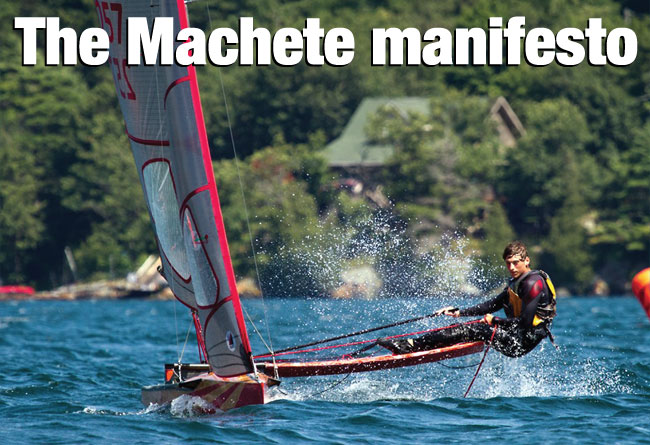
At Seahorse we bang on endlessly about the cost escalation in small boats and the consequent narrowing of the sport’s appeal as young talent is driven away. Hailing from a sailing dynasty that has contributed a great deal to the sport over the years, David Clark decided to do something about it – and the final result is an inspiration
In many ways we aimed dinghy sailing at the rocks when we discovered carbon fibre. It advanced our optimal performance and it wowed the passerby, but on an economic and cultural level it set us on a track that is lousy for the sport as we know it.
Circa 1970 the difference in weight, stiffness and cost between a simply constructed wood boat vs one with equivalent structure in fibreglass was null. Both were a bit whippy, the weights were roughly equivalent, and the costs were low. The lightest, strongest and fastest boats of the era were C-Class catamarans, built from thin plywood with mindboggling amounts of ring bulkheads and stringers inside. My father has Little America’s Cup winners Patient Lady IV and Patient Lady V hanging in a shed out back and their insides are more cathedral than boat.
Luckily for everybody outside of speedsailing, cutting and fitting that many intricate parts by hand was prohibitively labour intensive, so the number of fleetslaying ‘superboats’ made using this technique was relatively low and thus having one was not necessary. The state of the art was affordable, used boats even more so, and yacht clubs could maintain a strong base of low buy-in young and working class participants. It hit a healthy equilibrium and for a period we achieved a golden age of dinghy sailing.
Enter carbon, the miracle fibre. I’ve grown up working with carbon and the dirty secret is that it’s tremendously simple to use. In dinghies it practically eliminates even thinking about scantlings. Your prototype’s chainplates ripped out? No worries. Bump up the laminate by 300g in the immediate vicinity and forget about it. Bulkheads? OK, maybe we’ll put in one or two but really the foam sandwich skins are so crazily stiff that in most places you barely need them. From a builder’s perspective, especially if you were already laminating with glass, carbon was the ultimate windfall. No labour increase, huge quality increase. Yes, please.
We invite you to read on and find out for yourself why Seahorse is the most highly-rated source in the world for anyone who is serious about their racing.
To read on simply SIGN up NOW
Take advantage of our very best subscription offer or order a single copy of this issue of Seahorse.
Online at:
www.seahorse.co.uk/shop and use the code TECH20
Or for iPad simply download the Seahorse App at the iTunes store


